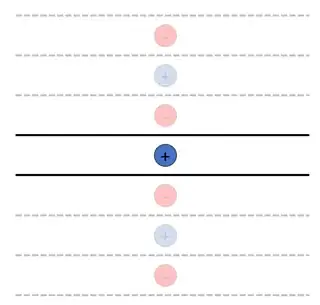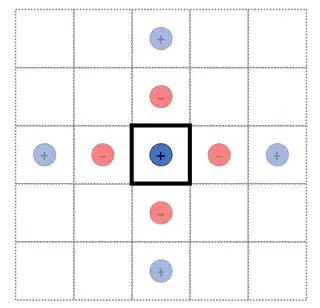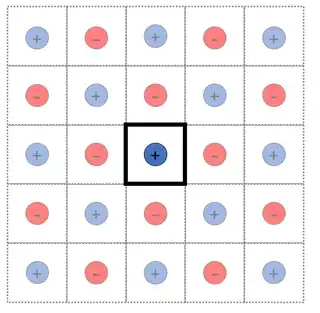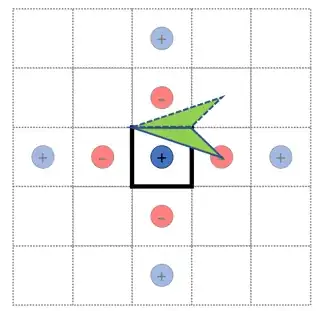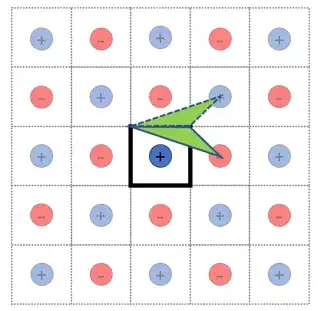I would like to better understand the method of image charges for more than one planar surface. I know that the whole objective is to satisfy the boundary conditions, and thus this can be used as a check for any potential solution. However I would like to know if there are a consistent set of rules for applying the "Method of Image Charges" rather than making reasonable guesses and then checking the solutions are correct.
For example, I know that the solution to a point charge between two infinite planes is as follows. Using the Method of Image Charges for the upper plane dictates that you place an opposite charge symmetrically on the other side. You then turn your attention to the other plane. It now has two charges above its surface and the Method of Image Charges dictates that you place two opposite charges symmetrically on the other side etc. etc. until you have an infinite ladder of charges. See image below (where reflections extend to infinity).
However for more than one planar surface, particularly finite surfaces, I am not sure how to consistently apply the Method of Image Charges. For example, consider a point charge in a box. Just applying the Method, one could envisage a solution such as (A) below. It's basically two copies of the previous example. On the other hand, a solution like (B) also seems reasonable, because you reflect the solutions from one set of planes around the perpendicular planes. The confusion comes for me in the fact that the planes are not infinite. I am not sure if the Method of Image Charges clearly dictates which answer is correct, without resorting to checking the boundary conditions are satisfied (although this is of course a sensible check). I am ultimately interested in this question because I am modelling an array of interacting dipoles in a photonic cavity (and I assume perfect metallic boundary conditions for simplicity of the model).
Option (A)
Option (B)
